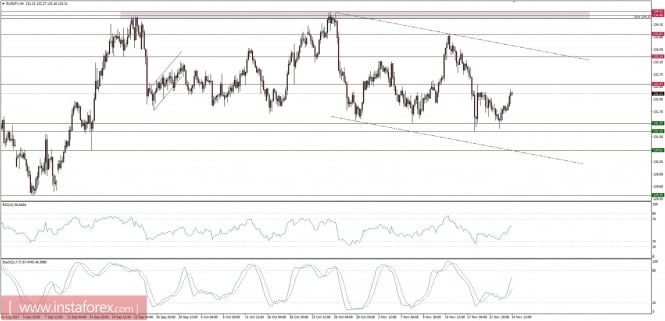The PMI Composite for the Eurozone pointed to the fastest pace of expansion since 2011. From partial data, we only received information from France and Germany (preliminary data), but in both cases, there were positive surprises. The two largest block economies remain in full swing and suggest that euro area GDP growth in the entire fourth quarter may reach 0.8% q/q. This would be above the ECB forecasts, but also expectations currently discounted by the market. A faster pace of development can mean shutting down the demand gap and rising wage pressure, and further inflation. This would be good news for the hawks in the ECB's Governing Council, as they might push for a postulate and close the asset acquisition program in September 2018. However, after yesterday's discussion at the ECB meeting, we know that hawks are in the minority. It further dominates the belief that the market can not prematurely give hints about one of the key monetary expansion projects, as this would lead to an overt and unwanted tightening of credit conditions. Based on such good economic data, it is more likely that the ECB will be forced to modify its forward guidance for faster normalization. But the central bank still has time, and the fears of the doves will rather keep them from changing the communication for a good few months. For this reason, the EUR / USD might remain neutral for the rest of this year, but the chances for a steady growth in next year to 1.24 or higher are high.
Let's now take a look at the EUR/JPY technical picture at the H4 time frame. The market is still locked in a horizontal area between two important zones: 131.15 - 131.37 (support) and 134.40 - 134. 51 (resistance). As long as one of this level is clearly violated, the sideways move will continue. The larger time frame trend remains bullish.

